It is a colorful garment with earflaps, very traditional in the high Andean regions. Nowadays, it has gained significant international popularity because it has captured the world's attention with its unique design. This item is highly valued for its history and its handcrafted process, as it preserves an ancestral form. Now, get ready to discover the trends of Peru:
The Andean chullo originates from the Andes, where it is used as protection against the cold. Its traditional design is handwoven by people from rural areas.
The chullo dates back to Inca times, where it protected them from the cold; it also indicated the social status of the wearer. Today, it has evolved but remains a symbol of cultural identity. The chullo is appreciated as a fashion garment that maintains a connection to Andean culture.
It is primarily made with alpaca fiber, globally known for being soft, warm, cold-resistant, sustainable, and environmentally friendly. Additionally, it is a great choice for those seeking comfort.
Each chullo is a work of craftsmanship and dedication by Andean weavers, typically sold in shopping centers and some tourist locations.
The making of this item combines traditional techniques and manual skill. It begins with the selection and dyeing of alpaca fiber, followed by the weaving process that creates unique pieces. Some reflect traditions, experiences, flora, fauna, and more.
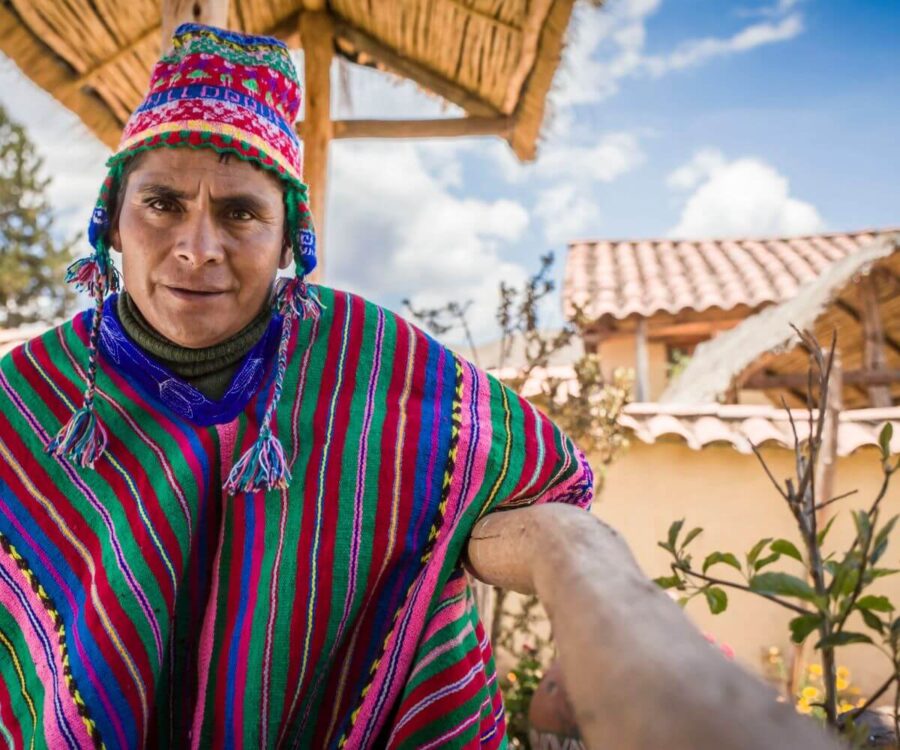
The chullo has been incorporated into fashion and high couture, being used by international designers in winter collections. Currently, it is a garment that combines culture and modern style.
Today, it has transcended its Andean origins to become a global trend, as international designers have incorporated it into their collections. This blend of tradition and modernity has allowed more people to discover the culture, supporting local communities in preserving their traditions.
Although it is associated with the cold, it is versatile as it can be worn in any season. The colorful designs make it a fashion statement for warm climates, while in winter, it provides warmth. The essence of this garment is that it pairs well with other clothing.
It is a piece that represents traditions and supports the craftsmanship of Peruvian communities. When you choose a chullo, you not only preserve a tradition but also acquire a unique accessory, embracing a style rooted in ethics and culture.
You can purchase it directly from communities or artisanal stores that support fair trade. This way, you obtain a quality product while supporting local artisans.
Its roots lie in pre-Inca cultures, but over time, it has evolved, incorporating unique characteristics.
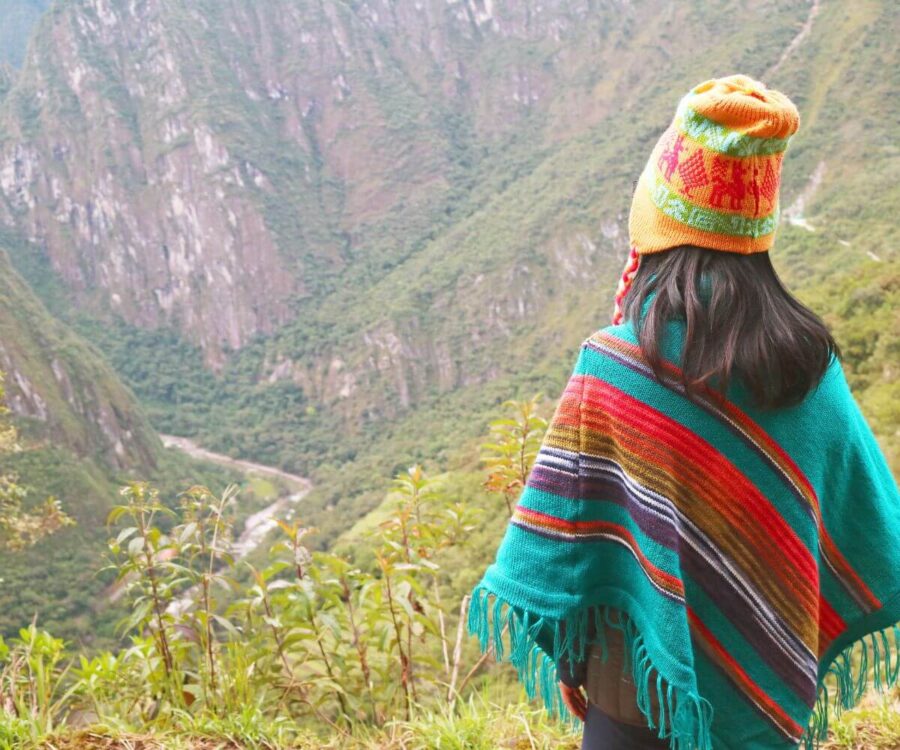
It is a symbol of Andean identity, showcasing the connection of communities with their environment and worldview. The colors and designs convey beliefs, traditions, and customs passed down from generation to generation, serving as a cultural heritage.
The designs often carry meanings related to sacred animals or natural elements such as mountains and rivers, delivering a cultural message to preserve and share Andean culture.
In the last decade, designers like Dior have highlighted its artistic and cultural value. This inclusion has elevated the chullo to be recognized as a work of art.
The main crafting regions are where Andean communities keep the traditions of artisanal weaving alive.
It is mainly crafted in regions like Cusco, Puno, and Ayacucho, where communities continue to preserve traditional techniques. A significant portion of the sale of artisanal products is still maintained in these areas.
It is more than just a garment for the cold; it is a symbol of Andean culture and a global fashion accessory. It has endured over time in Peru to honor the legacy of our ancestors.
It’s time to embark on new adventures. Don’t doubt that Peru is one of the best options. Come and learn more about its ancestral richness.
The Peruvian Paso horse is a proud representative of national identity and has gained admiration worldwide for its unique gait and history. This breed symbolizes part of Peruvian culture that is still highly valued in Peru and other countries. Learn more about its origin and characteristics.
The Peruvian Paso horse originates from horses brought by the Spanish. This breed was refined in Peru and today reflects the country's history and tradition.
The Peruvian Paso horse emerged with the arrival of the Spanish in the 16th century. They brought breeds such as the Andalusian and the Barb. These horses adapted to the Peruvian terrain, developing their characteristic "smooth gait," becoming a distinctive breed renowned for their movement and temperament.
The breeding of the Peruvian Paso horse has been perfected in regions like Lambayeque and La Libertad, where an ideal environment for its development was found. Breeders prioritized preserving its purity, refining its smooth gait and temperament. Today, it is a cultural symbol and a source of pride for Peru.
The Peruvian Paso horse is not just a show animal but also a cultural symbol that requires passion and dedication, which has led the breed to be recognized worldwide.
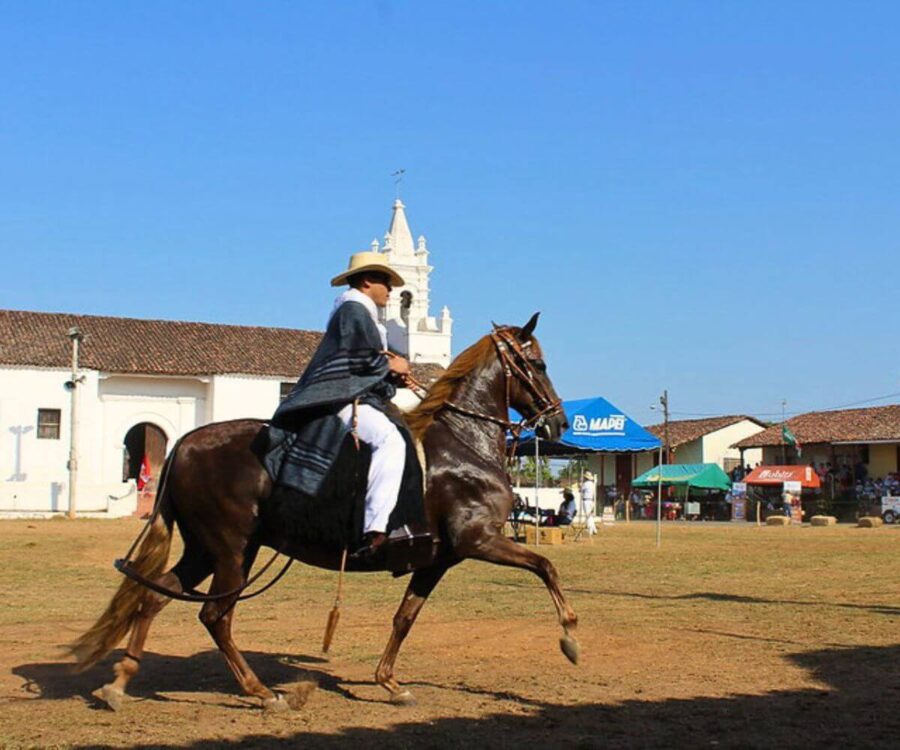
It is distinguished by its smooth gait, known as "paso llano," which is comfortable for both the rider and the horse. Its docile temperament and great stamina make it ideal for long rides.
Renowned for its smooth and fluid movement, its unique gait is a lateral motion where the front and back legs on the same side move simultaneously. This creates a gentle, jolt-free ride preferred for long distances. This gait is ideal for equestrian activities, leisurely rides, and exhibition competitions.
Its unique gait is complemented by its elegant physical conformation. It has a robust yet agile body, a long arched neck, and a high-set tail. Its strong, well-proportioned legs provide great stamina and balance.
These horses are docile and obedient, making them an ideal choice for both experienced riders and beginners seeking a comfortable and enjoyable equestrian experience.
The Peruvian Paso horse is a symbol of Peruvian identity and tradition, especially on the northern coast. It plays a key role in festivities and competitions that celebrate the country's cultural heritage.
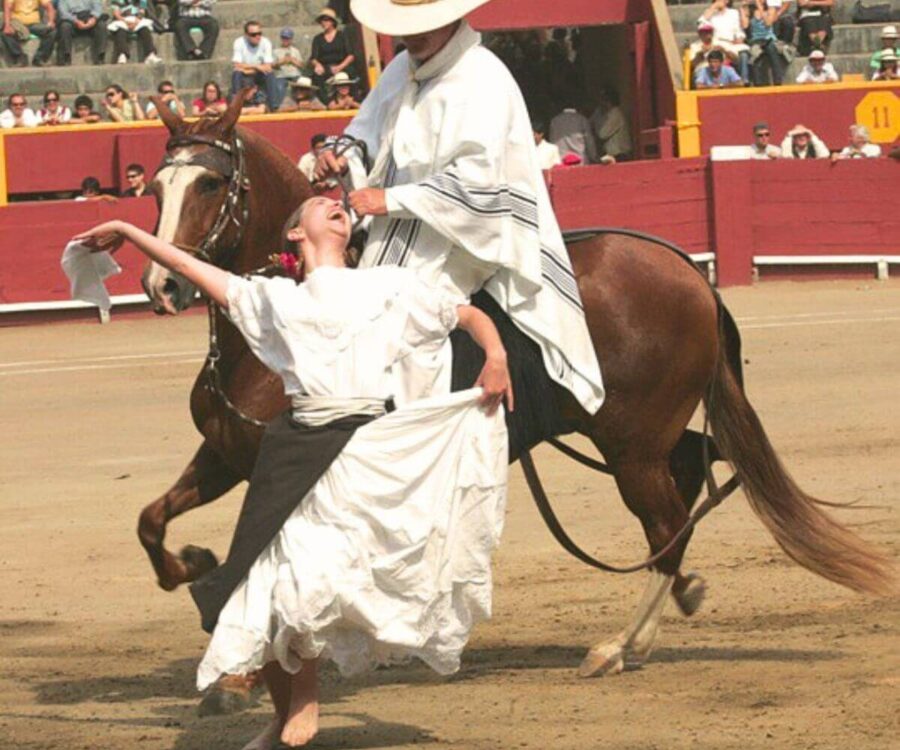
The Peruvian Paso horse is an integral part of Peruvian culture and appears in festivities accompanied by the marinera, a traditional dance often featured in exhibitions. The horse and rider move to the rhythm of the music, showcasing skill and synchronization in the performance.
The Peruvian Paso horse has been officially recognized as a national cultural heritage, emphasizing the identity and legacy of the country. This recognition promotes the preservation of the breed both nationally and internationally.
It has gained recognition beyond Peru's borders, excelling in international competitions. Countries like the United States and Colombia have adopted the breeding of this horse, organizing exhibitions that celebrate its distinctive style.
The Peruvian Paso horse has gained popularity outside Peru, becoming appreciated in countries like the United States, Colombia, and Ecuador. Associations have been established to maintain the breed's purity. Competitions and exhibitions abroad have helped spread Peruvian culture and strengthen connections among breeders.
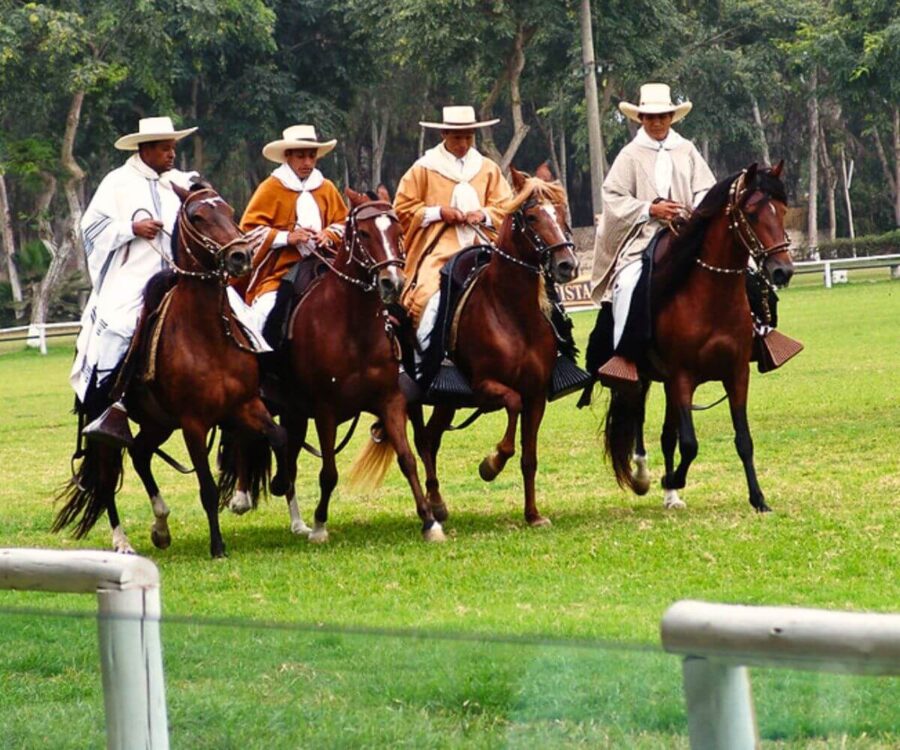
Competitions showcase the elegance of the horse's gait and the rider's handling skills. These events not only reward the horse but also recognize the breeders' efforts to maintain the breed's purity. They always attract crowds and celebrate tradition.
Its conservation is crucial for preserving cultural heritage, facing challenges such as modernization and competition with other breeds.
Breeders and associations in Peru preserve the Peruvian Paso horse through careful selection of specimens and the organization of competitions. Despite challenges, they aim to ensure that the breed remains relevant for future generations. These efforts are key to preserving this cultural heritage.
The future of this Peruvian symbol faces challenges such as competition with other breeds and globalization. The key lies in the adaptability of breeders and educating people about its cultural value. With the efforts of breeders and associations, the breed has a promising path ahead.
Would you like to learn more about breeding and exhibiting the Peruvian Paso horse? Our team is ready to help you discover everything about this magnificent breed and organize visits to breeding farms in Peru. Contact us at Phone +51 984 550 165 or email us at Email ventascusco@terandes.com for more information and experience it up close.
Traveling alone can be a rewarding experience, but it's normal to have concerns about safety. Here, we’ll provide you with practical tips and recommended destinations such as:
Some recommended destinations are:
In this guide, we provide the best tips and recommendations so you can enjoy your adventure in Peru to the fullest, feeling safe and confident at every step of your journey.
If you’re traveling alone, book with reliable companies, use safe transport apps, and carry a device to stay connected at all times. Here are some recommendations.
Always choose agencies with good reviews and ratings. Ensure they are certified by tourism authorities, as this is key to ensuring your safety in places like Machu Picchu, the Inca Trail, etc. A specialized guide will make all the difference during your tours.
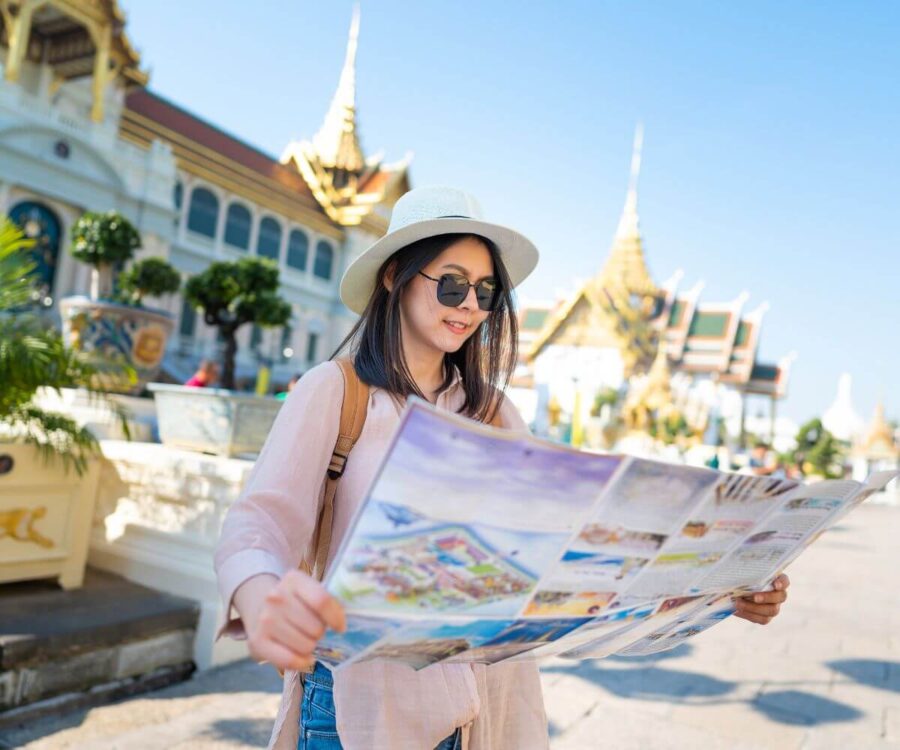
Always stay attentive to your surroundings, especially in busy tourist areas like Lima, Cusco, and Arequipa. We recommend taking care of your belongings and avoiding being on your phone constantly in crowded areas. If you notice anything unusual, it’s best to move away.
Although major tourist cities are generally safe, try to avoid walking alone at night, especially in poorly lit or less crowded areas. If you need transportation, use trusted apps to track your journey and share your location with someone you trust.
Always maintain an internet connection to look up directions, communicate, and use apps like Google Maps. It’s highly recommended to purchase a SIM card upon arriving in Peru or have an international data plan. This will help you in unexpected situations.

Only use certified taxis to ensure your safety. You can find these through many apps, allowing you to verify the driver and vehicle. If you hail a taxi on the street, share your location with someone you trust. At the airport, choose cars from official services.
At airports and bus terminals, always keep an eye on your luggage and avoid accepting help from strangers. If you need to leave your belongings, use secure lockers to prevent theft.
Use backpacks with zippers and keep documents and money in a pouch under your clothes. This will help protect your belongings in crowded places. If you carry handbags, opt for sturdy ones that provide better security.
Keep a notebook with emergency numbers, as well as the contact information for your embassy, hotel, and family. This can be very helpful if your phone runs out of battery or gets damaged. You can also note important addresses and tour details.
If you feel in danger, seek help from authorities or employees at trustworthy places. In some cases, it’s a good idea to learn a few phrases in Spanish, such as "¿Me puedes ayudar?" Most people are kind and willing to assist you.
Yes, it is possible to make friends while traveling alone in Peru. In accommodations, excursions, and group activities, you’ll meet other tourists. Additionally, locals are friendly, and this allows you to join tours or local events, helping you connect with others.
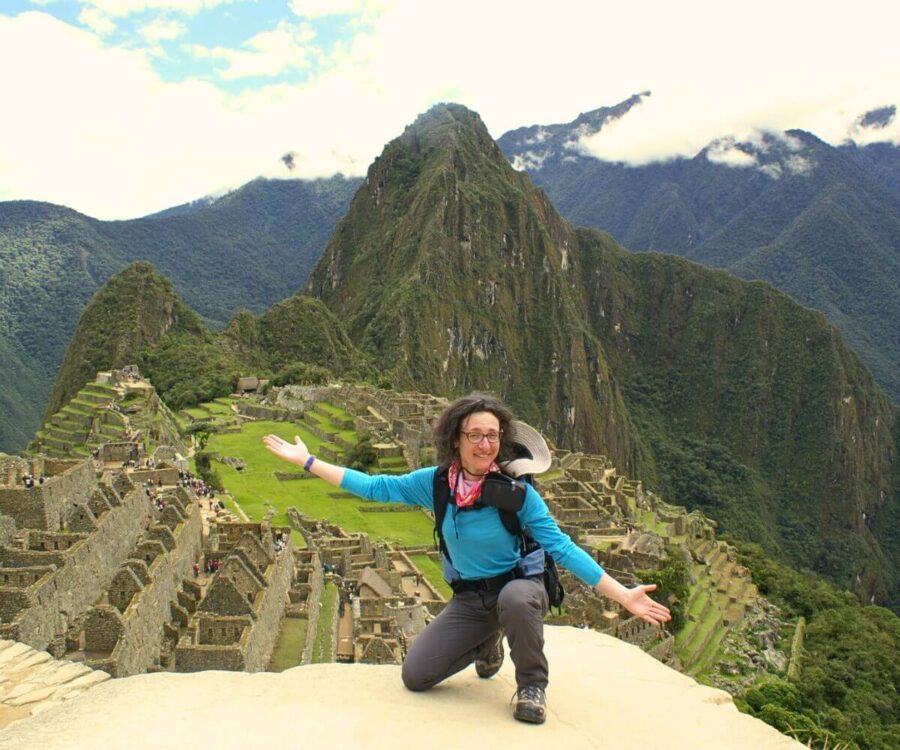
Traveling alone to Peru is worth it and can be one of the most enriching experiences. It allows you to explore at your own pace, based on your plans and interests. You’ll have the opportunity to experience its culture and breathtaking landscapes like Machu Picchu, Lake Titicaca, and more.
Peru is generally safe for solo female travelers if you take basic precautions. Cities like Cusco and Arequipa are calmer, but in Lima, the reality is different. You need to be more cautious, avoid displaying valuable items in public, and stay attentive in all areas whenever possible.
When traveling to Peru, destinations like the Sacred Valley and Machu Picchu are ideal for their safety and rich cultural offerings. Here are more options for you to consider.
Cusco is Peru's cultural capital where you can explore places like Machu Picchu and the Sacred Valley. The city combines history, colonial architecture, and Inca heritage, making it an unmissable destination.
The Huacachina Oasis, near Ica, is perfect for those seeking adventure. You can try sandboarding and buggy rides across the desert dunes, creating a truly fun experience.
Paracas and the Nazca Lines offer unique landscapes and cultural experiences. A flight to view the lines is a must, while the Paracas National Reserve stands out for its flora and fauna.
Arequipa, the "White City," offers a calm atmosphere and serves as the gateway to the Colca Canyon, where you can spot condors and enjoy a destination that combines culture and nature.
Research your destinations before arriving, keep both physical and digital copies of your documents, share your itinerary with family members, and ensure you have a communication plan. Taking these precautions will help you enjoy your trip with greater peace of mind.
Before your trip, gather information about your destination and make sure your documents are safely stored. If possible, keep copies as well. It’s also advisable to inform someone you trust about your itinerary.
If you love adventure, consider trekking to the Rainbow Mountain or exploring the Amazon rainforest. These are safe destinations for solo travelers looking to make the most of nature.
Many women who have traveled alone to Peru highlight the friendliness of locals and the country's rich culture. If you’re considering these adventures, keep these tips in mind while planning your trip.
If you need help planning your trip, don’t hesitate to contact us at Phone +51 984 550 165 or Email ventascusco@terandes.com. We are here to make your experience unforgettable.
To call Peru from abroad, it is important to know the country code (+51) and how to dial landlines or mobile numbers. Communicating correctly will save you time and money. In this guide, we’ll provide you with the necessary steps to make your calls.

To call a mobile phone in Peru from another country, you need to dial the country code (+51), followed by the number you want to reach, which always starts with the digit 9. The process may vary depending on the country you are calling from, but this is the basic format.
Example: If you are calling from the United States to a mobile phone in Peru, dial: 011 + 51 + 9 + phone number.
Detailed examples for several countries:
| Country | Exit Code | Country Code (Peru) | Dialing Format | Full Example |
|---|---|---|---|---|
| Argentina | 00 | 51 | 00 + 51 + 9XX XXX XXX | 00 51 912 345 678 |
| Chile | 00 | 51 | 00 + 51 + 9XX XXX XXX | 00 51 912 345 678 |
| Colombia | 009 | 51 | 009 + 51 + 9XX XXX XXX | 009 51 912 345 678 |
| Spain | 00 | 51 | 00 + 51 + 9XX XXX XXX | 00 51 912 345 678 |
| United States | 011 | 51 | 011 + 51 + 9XX XXX XXX | 011 51 912 345 678 |
| Canada | 011 | 51 | 011 + 51 + 9XX XXX XXX | 011 51 912 345 678 |
| Mexico | 00 | 51 | 00 + 51 + 9XX XXX XXX | 00 51 912 345 678 |
| France | 00 | 51 | 00 + 51 + 9XX XXX XXX | 00 51 912 345 678 |
| Germany | 00 | 51 | 00 + 51 + 9XX XXX XXX | 00 51 912 345 678 |
| Brazil | 0021 | 51 | 0021 + 51 + 9XX XXX XXX | 0021 51 912 345 678 |
| Italy | 00 | 51 | 00 + 51 + 9XX XXX XXX | 00 51 912 345 678 |
Important Notes:
00, in the United States it is 011, and in Colombia it is 009.51.51), and then the 9-digit mobile phone number, which always starts with 9.Before making international calls, check the rates and restrictions with your service provider. If you are planning to travel to Peru, we recommend using messaging apps like WhatsApp or Telegram to make calls over Wi-Fi or mobile data, especially with a local SIM card.
If you plan to make multiple calls to Peru during your trip, here are some tips to reduce costs:

If you're in the Cusco region and want to call a landline, you should dial 084 + the local number.
Example: If you're in Cusco and want to call a landline in the same city, simply dial:
084 + 2345678
To call a landline in another region of Peru, dial "0" first, followed by the area code, and then the landline number.
Example:
0 + 1 + 87654320 + 44 + 1234567If you want to call from a mobile phone to a landline, the process is quite similar:
Example:
0 + 54 + 76543210 + 84 + 4567890To call a landline in Peru, you must use the prefix "0" followed by the area code before the number.
To call a mobile phone from anywhere in Peru, simply dial the 9-digit number, which always starts with 9, e.g., 987654321.
Peru has various area codes depending on the city:
Familiarize yourself with these codes, especially if you need to contact hotels, restaurants, or tour guides in different cities.
When making calls within Peru, the use of prefixes can be confusing. Here are some tips:
To call Peru from abroad, it is important to know the country code (+51) and how to dial landline or mobile numbers. Communicating correctly saves you time and money. This guide will provide you with all the necessary information on how to make your calls.

If you want to use your phone in Peru, purchasing a SIM card can enhance your communication. Here is how to do it:
You can buy a SIM card at airports, convenience stores, or shopping malls in cities. Recommended operators include:
The most recommended operators are Claro or Movistar due to their extensive coverage throughout the country, including rural areas and mountainous regions like Cusco and Machu Picchu.
To activate your SIM card, follow the instructions provided at the store, present your passport, and make a minimum top-up to activate it.
In Peru, the emergency numbers are:
For emergencies on the road, note the following contacts:
If you are a foreigner, it will be useful to have the number of your embassy or consulate in case of emergency. Most embassies are located in Lima, but some are in other regions of Peru and have 24-hour assistance lines available.
We hope this guide has helped you understand how to call Peru and communicate within the country. If you need assistance planning your trip, our team is here to help you make your experience in Peru unforgettable.
The guinea pig is well-known in Andean culture, both for its cultural significance and its role in the country's gastronomy. In Peru, it is widely consumed for its nutritional value and the many ways it can be prepared for consumption. If you want to learn more about guinea pigs, this article is for you!
The guinea pig is native to the Andes and has been traditionally consumed in Peru for centuries. This animal is highly valued for its meat and unique flavor, making it an emblematic dish of Peruvian cuisine.
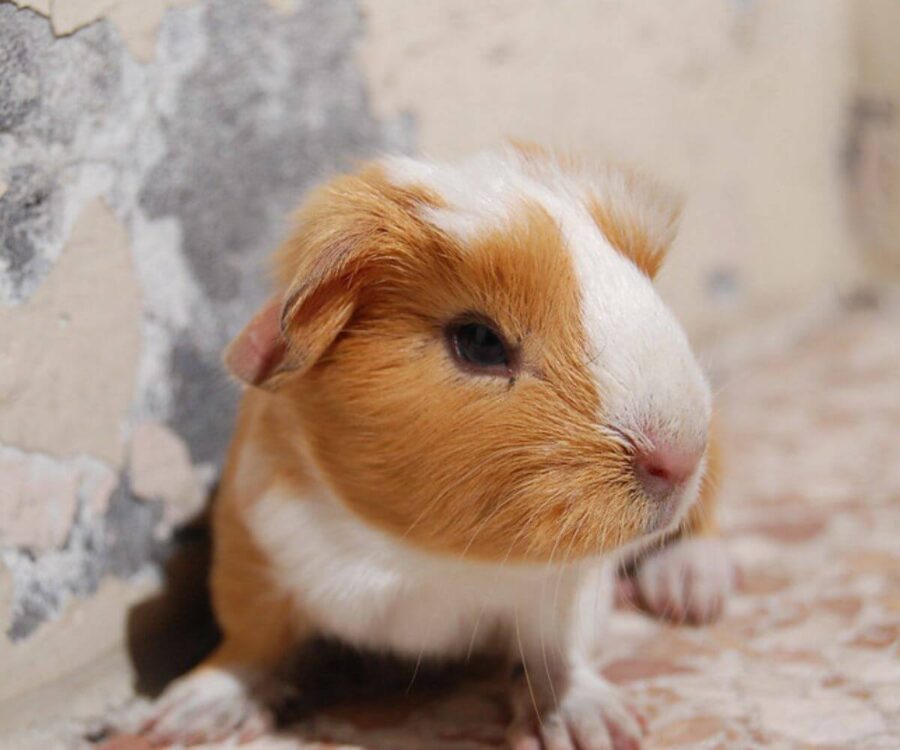
The guinea pig was domesticated over 3,000 years ago by pre-Incan cultures and became a fundamental part of life in the Andes. Its importance extended beyond food to include ritual and medicinal value.
During the Incan era, the guinea pig was used in religious ceremonies as an offering to the gods to ensure good harvests. Beyond its meat, it was believed to have healing properties; healers used it to "diagnose" illnesses by passing it over the body.
With the arrival of the Spanish, the guinea pig became a symbol of Peruvian identity, incorporating new preparation techniques. Today, it is highly valued during festivities and special events, particularly in the regions of Cusco, Arequipa, and Cajamarca.
Guinea pig meat is highly nutritious, offering the following benefits:
Guinea pig meat also promotes muscle development, strengthens the immune system, and supports cardiovascular health. In recent years, its consumption has been encouraged as a healthy alternative to other red meats.
There are many ways to prepare guinea pig, varying according to the regions where it is most consumed. It typically requires marinating with a mix of local spices.
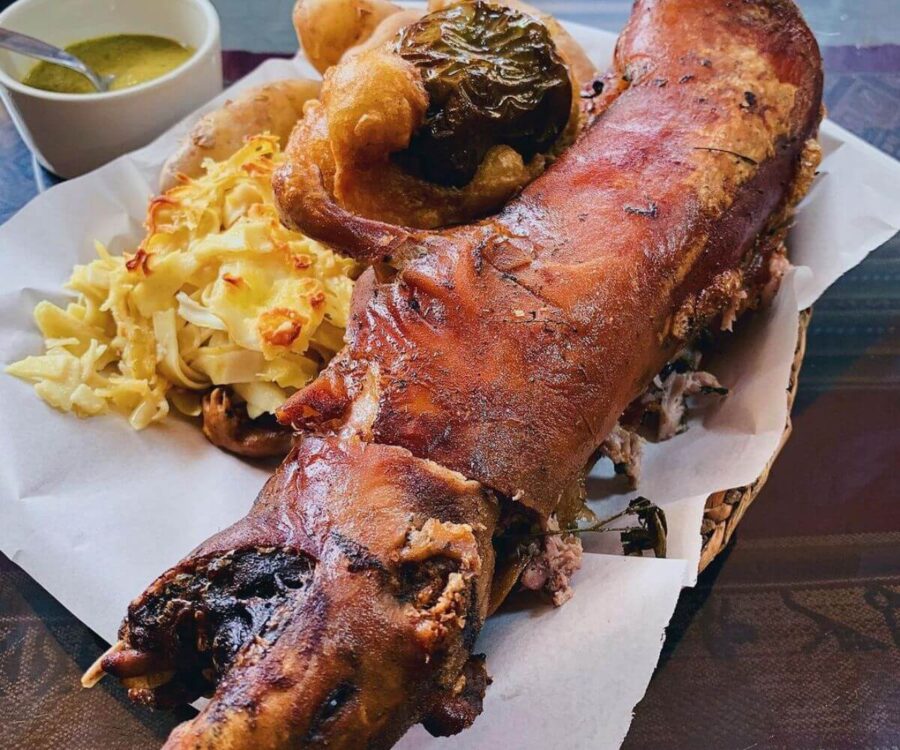
In Cusco, guinea pig is one of the most popular dishes. Its preparation involves seasoning the guinea pig with cumin, huacatay, garlic, and other spices. It is then roasted until crispy and served with golden potatoes and a salad. This dish is commonly enjoyed during celebrations or family gatherings.
In Arequipa, the "cuy chactado" is a traditional recipe that involves frying the guinea pig in hot oil until it is golden and crispy. It is served with rocoto sauce, corn, and boiled potatoes.
The guinea pig is not just food but also symbolizes prosperity and well-being in many rural communities. It is also used in offerings during religious ceremonies like "Pachamama Raymi." Additionally, raising guinea pigs provides an economic livelihood for many families.
It's common to have questions about guinea pigs. However, what many may not know is that guinea pig meat is highly nutritious and widely consumed in various regions of the country.
Yes, guinea pig is safe for human consumption and is considered healthier than other meats due to its low fat content and high protein value. Proper preparation is necessary.
Guinea pig meat tastes similar to rabbit but with a tender and juicy texture, especially when cooked properly. If you enjoy trying new flavors, give it a try!
A domestic guinea pig lives between 4 to 7 years, depending on the care it receives. In commercial production, they are raised for a shorter time before becoming ready for consumption.
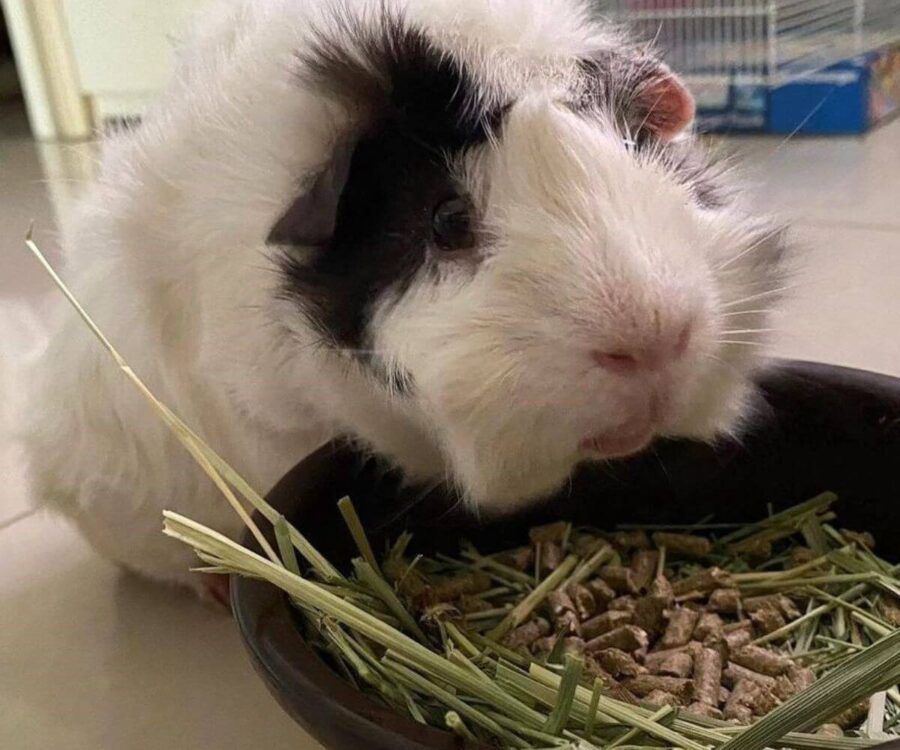
Raising guinea pigs at home is common in many rural areas but requires a clean space. If you plan to raise guinea pigs, ensure they receive a balanced diet, and it's recommended to have more than one to encourage quick reproduction.
Raising guinea pigs at home is common in many rural areas but requires a clean space. If you plan to have guinea pigs, make sure to provide them with a balanced diet. It is also recommended to have more than one for faster reproduction.
Yes, guinea pig meat is one of the most nutritious and protein-rich options, making it an excellent choice for those looking for a balanced and healthy diet.
Raising guinea pigs is cost-effective, as it requires a medium-sized space and simple feeding, which consists of grass, alfalfa, vegetables, and some grains. This makes it an affordable protein source for those on a budget.
There are many places where you can try guinea pig in its various presentations, each offering a unique and flavorful experience.
1. Recommended Restaurants:
2. Traditional Areas to Taste Guinea Pig:
The cock-of-the-rock (Rupicola peruvianus) is the national bird of Peru, representing the Andean and Amazonian biodiversity. It stands out for its striking plumage and unique behavior, making it a fascinating species for those looking to explore Peruvian wildlife. This guide provides everything you need to know about the famous cock-of-the-rock.
The cock-of-the-rock, also known as "tunqui" in Quechua, has the scientific name Rupicola peruvianus. It is associated with rocky habitats where it lives. Other common names include "cock-of-the-rock" in English, due to its habit of nesting on rocky canyon walls and riverbanks.
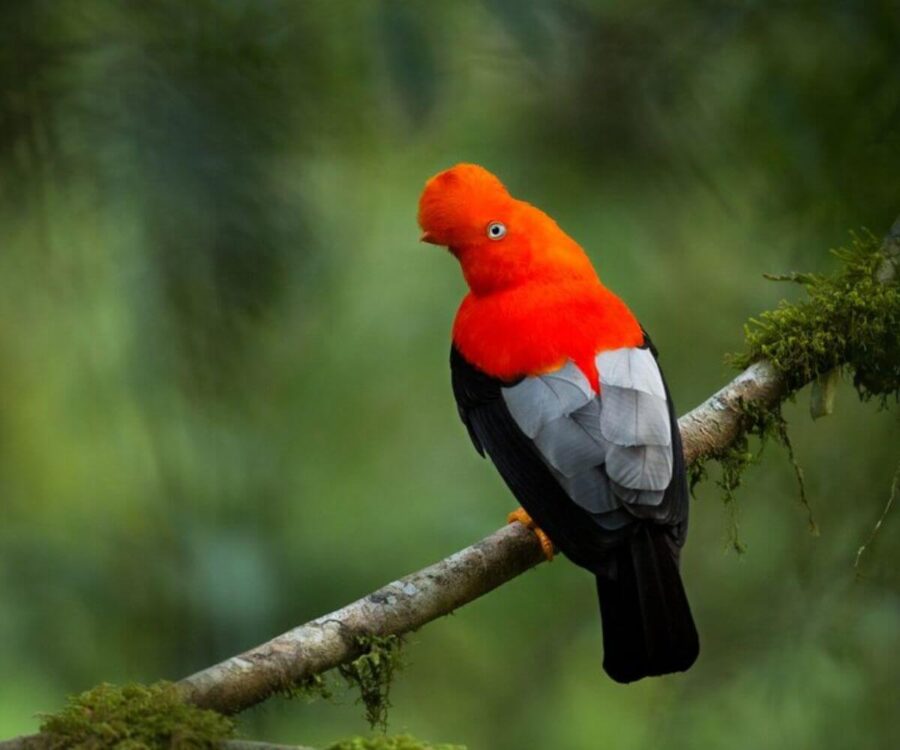
The cock-of-the-rock is mainly found in the mountainous regions of the Andes, including countries like Peru, Bolivia, Ecuador, and Colombia. This species prefers cloud forests and high jungle regions located between 500 and 2,400 meters above sea level. The dense and humid environment of the jungle provides the perfect refuge for hiding and reproducing.
It inhabits forests, national parks, and nature reserves such as the Manu National Park, the Tambopata Reserve, and the Yanachaga-Chemillén National Park. These areas are ideal due to their dense and humid conditions, located between 500 and 2,400 meters above sea level.
It lives on rocky walls, ravines, and streams surrounded by dense vegetation. This environment is perfect for nesting, performing courtship rituals, and feeding, while also providing protection from predators.
The male is known for its bright orange-red plumage, while the females have brown-toned plumage to better camouflage with their surroundings. Males also feature a distinctive semicircular crest on their heads, which rises during courtship displays.
The most notable feature of this species is its colorful plumage and courtship behavior. Males gather in groups to perform rituals known as "lek," competing with dances and displays to attract females.
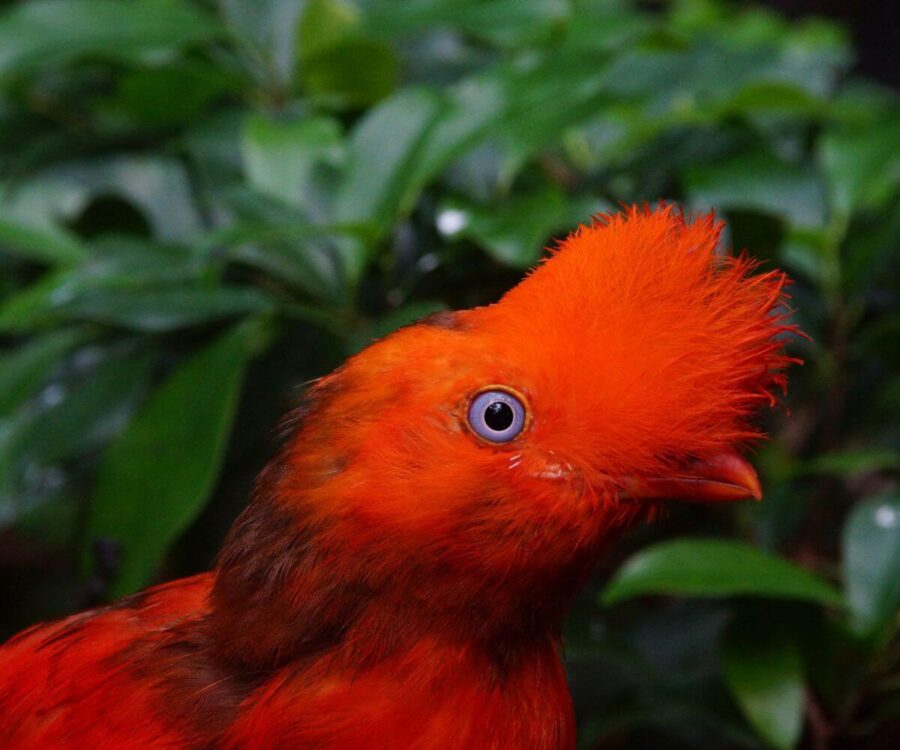
These birds exhibit marked sexual dimorphism. Males display bright coloration and a prominent crest, while females have brown plumage that helps them camouflage while protecting the nests. These differences are part of their reproductive strategy.
The cock-of-the-rock is territorial and social, especially during the mating season. It produces harsh, metallic sounds used in courtship rituals to attract females.
This species emits chirps and whistles during its displays in the leks. These sounds are primarily used to attract females and also serve to mark territory.
During the breeding season, males produce special vocalizations that are highly attractive to females. This mating song is accompanied by rhythmic movements and plays a crucial role in reproductive success.
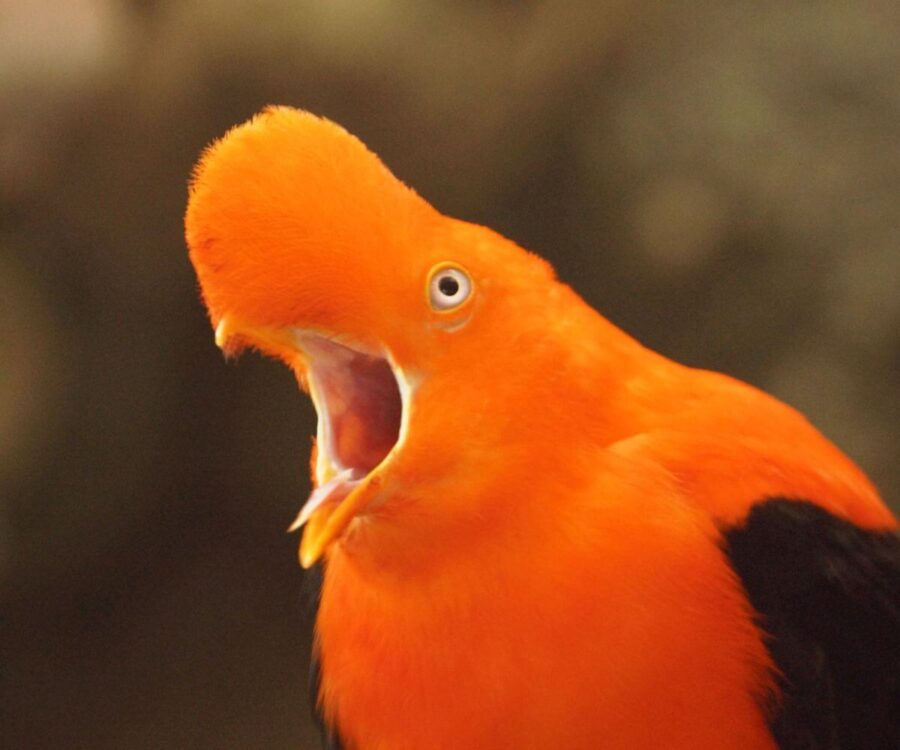
The cock-of-the-rock is primarily frugivorous, meaning it mainly feeds on fruits. It also consumes insects and plays a vital role in seed dispersal, contributing to forest regeneration.
Although this species is not critically endangered, it faces threats such as deforestation and illegal hunting. According to the IUCN, it is considered vulnerable in some regions due to habitat fragmentation, prompting numerous awareness campaigns.
To conserve the cock-of-the-rock, it is essential to protect natural areas, educate about its importance, and support local communities. Additionally, responsible ecotourism helps generate resources for protected areas and promotes its preservation.
The cock-of-the-rock is known for its group courtship behavior, but it also holds significant cultural and ecological importance.
It plays a vital role in the ecosystem by dispersing seeds, helping to maintain forests, serving as a positive ecological indicator, and contributing significantly to biodiversity.
The World Tourism Organization (UNWTO) has recognized five Peruvian towns as part of its list of Best Rural Destinations for 2024. These towns were selected for their commitment to sustainability, the preservation of their cultural heritage, and their focus on responsible tourism development. Among the highlighted destinations is Maras, in the Cusco region, famous for its salt mines and cultural heritage.
Town of Maras, Cusco
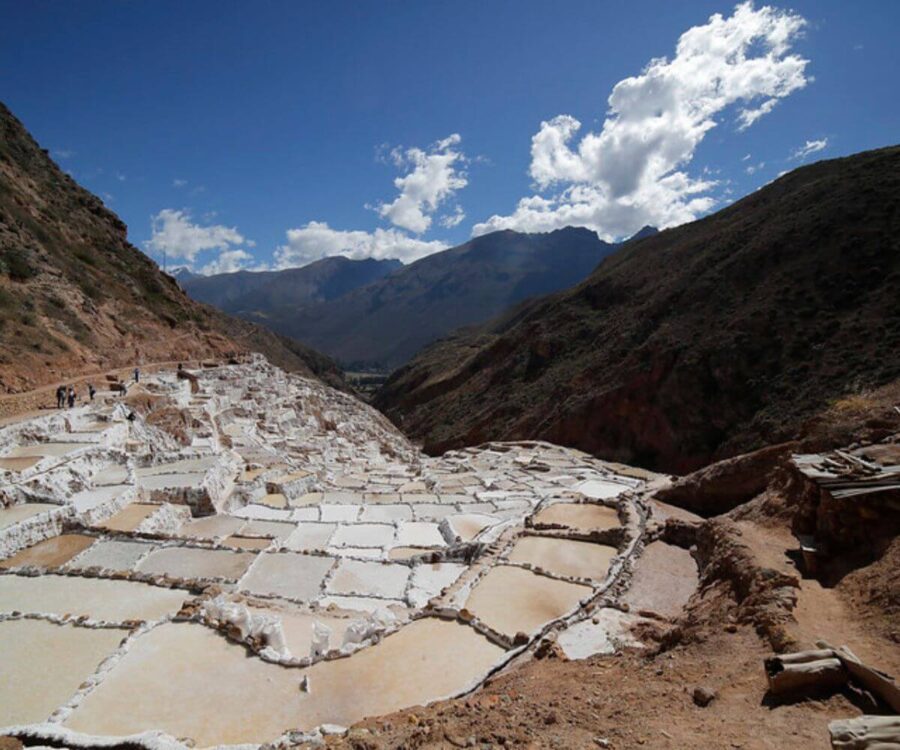
Maras, located in the Sacred Valley of the Incas, is renowned for its salt mines that date back to the Inca era and are still used by local families. The UNWTO has recognized Maras for its efforts in preserving ancestral practices and promoting community-based tourism that respects the environment.
Visitors can learn about the artisanal salt extraction process, an activity that provides direct income without negatively impacting the surroundings.
Quinua, Ayacucho
Quinua is known for being the site of the Battle of Ayacucho, which secured the independence of Peru and South America. Beyond its historical significance, the town keeps its artisan traditions alive, particularly in ceramic production. The UNWTO has recognized Quinua for its efforts in protecting its cultural heritage and developing sustainable tourism that supports local artisans and promotes education about its history.
Sibayo, Arequipa
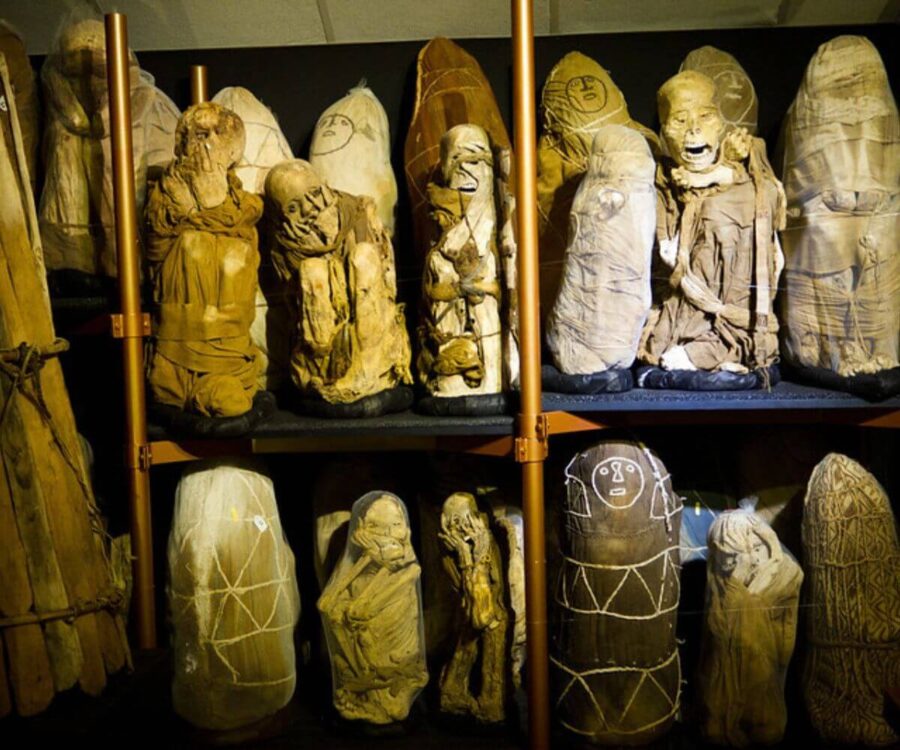
Sibayo - Arequipa
Sibayo was chosen for its community-based tourism model that seeks to preserve its traditional architecture and Andean lifestyle. The town’s stone houses have been restored to accommodate tourists, offering experiences of living with local families.
The UNWTO recognized Sibayo for its rural tourism model that boosts the economy while promoting cultural identity.
Leymebamba, Amazonas
Leymebamba was recognized by the UNWTO for its efforts in preserving archaeological heritage, such as the mausoleums of Revash and the Lagoon of the Condors. The town has developed tourism projects focused on the research and conservation of these sites.
The town is involved in protecting its cultural legacy. Additionally, the Leymebamba Museum plays a significant role in tourism, contributing to the preservation of historical and natural heritage.
Huancaya, Lima
Located in the Nor Yauyos-Cochas Landscape Reserve, Huancaya is recognized for its natural surroundings, featuring waterfalls, rivers, and clear lagoons. The UNWTO highlighted Huancaya for its focus on ecotourism, as it protects its resources while creating opportunities for the local community through its water resources and landscapes.
Hiking and adventure tourism activities are carried out with a focus on environmental conservation and respect for nature.
These five towns have demonstrated that tourism can be managed sustainably and can be an effective tool for improving quality of life and protecting cultural and natural heritage.
The Prime Minister of Canada, Justin Trudeau, arrived in Peru to participate in the APEC Summit 2024. His visit aims to strengthen relations between Canada and the Asia-Pacific economies, focusing on promoting economic cooperation and sustainable development in the Pacific region. Additionally, the summit will be an opportunity to engage with leaders on key topics such as innovation, trade, and more.
APEC 2024 focuses on collaboration within the Asia-Pacific region. Trudeau's participation highlights Canada’s interest in strengthening cooperation in areas such as trade, innovation, and the transition to clean energy. This is a chance for countries to discuss challenges and work together to find practical solutions.

Prime Minister Trudeau met with the President of Peru and other regional leaders to discuss matters of mutual interest. These meetings emphasize the importance of maintaining a strong relationship between Canada and Peru, focusing on areas such as investment, education, and bilateral trade. It is expected that these ties will benefit both countries in the long term.
Hosting APEC 2024 is a key opportunity for Peru to showcase its potential as a strategic partner. The summit not only fosters international cooperation but also strengthens the country's image as an attractive and reliable destination for foreign investment.
The discussions and agreements made during this forum could positively influence the Peruvian economy, resulting in a long-term impact on its growth.
The Peruvian government expressed its gratitude to the leaders and delegations participating in the APEC Summit 2024. Their presence reflects the commitment of these countries to collaborate for a more prosperous and sustainable future in the Pacific region. It is also crucial to address challenges and leverage growth opportunities in the coming years.
Authenticitys and Terandes have partnered to promote regenerative tourism in the Andean region. The objective of this collaboration is not only to attract visitors but also to contribute to the well-being of local communities and enhance the preservation of the natural environment. The initiative focuses on creating tourism experiences that have a real and positive impact both socially and environmentally.
Authenticitys is an international organization dedicated to designing tourism experiences with a positive social and environmental impact. Its mission is to transform how tourism is conducted, prioritizing the environment and the involvement of local communities while respecting all cultures.
Over the years, Authenticitys has worked on numerous projects in various countries focused on sustainability with a clear purpose. Through its initiatives, they have enabled local communities to benefit from tourism by involving residents in economic activities, serving as a regenerative approach to mass tourism.
At the World Travel Market (WTM) 2024 in London, representatives from Authenticitys met with the Terandes team to discuss potential collaborations in the Andean region. During the meeting, ideas were exchanged on how to implement regenerative tourism practices in Peru and other Latin American destinations, leveraging the expertise of both organizations.
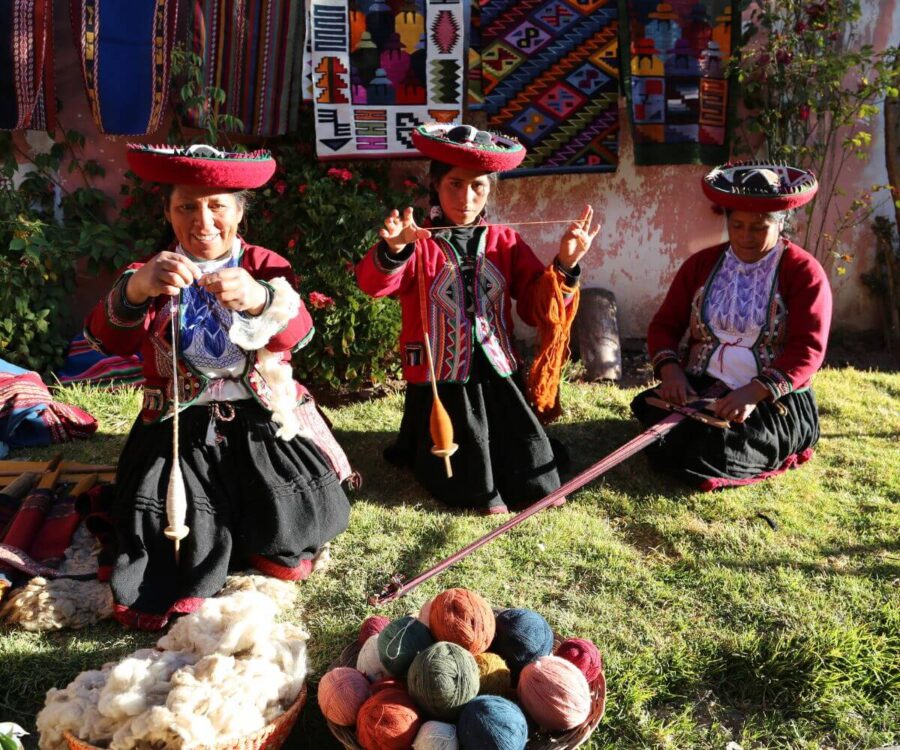
Terandes and Authenticitys are considering the possibility of developing joint projects to promote more inclusive tourism in rural areas of Peru. These projects would include the creation of tourism experiences that integrate rural populations, thus preserving the natural environment. Additionally, communities would be trained to manage these initiatives to protect the natural surroundings.
Authenticitys has successfully carried out projects in countries like Spain and South Africa, collaborating with many regions to develop tourism experiences that preserve culture while generating income. These cases demonstrate the impact they hope to replicate in the Andean region together with Terandes.
In the future, Authenticitys and Terandes plan to launch pilot projects in Peru that can serve as models for other regions. The goal is for these initiatives not only to benefit rural areas but also to become examples for other tourism operators interested in a new approach. This alliance between the two organizations represents a step toward tourism that generates a lasting positive impact.
ONU Tourism has announced the 55 best tourist villages of 2024, highlighting rural communities that promote sustainable tourism. These locations are recognized for their efforts to preserve the environment, strengthen local culture, and foster economic development through responsible tourism practices. The program aims to inspire other communities to adopt similar approaches for more inclusive and sustainable tourism.
The World Tourism Organization (ONU Tourism) is a specialized agency of the United Nations dedicated to promoting responsible and sustainable tourism globally. Its main goal is to use tourism as a tool to foster economic, social, and cultural development, with a particular focus on strengthening rural communities.
ONU Tourism works on creating policies that promote tourism as a growth engine, while supporting environmental conservation and the preservation of local cultures.
ONU Tourism's "Best Tourist Villages" program is an initiative that highlights rural communities implementing innovative and sustainable practices in their tourism management.
This initiative aims to bring value to smaller, lesser-known villages that are making significant efforts to integrate tourism responsibly and sustainably. The goal is to help these communities leverage tourism as a means to promote economic development, improve local infrastructure, preserve their traditions, and strengthen social cohesion.
The villages selected for this recognition are not only distinguished for their tourist appeal but also for their focus on sustainability. This includes the conservation of their natural and cultural heritage, promoting inclusive and accessible tourism, supporting the local economy through fair trade initiatives, and environmental education.
Furthermore, the program promotes the improvement of tourism services, the protection of natural resources, and the creation of dignified jobs for the residents of these communities.
This year, 55 rural communities from around the world were selected as the best tourist villages by ONU Tourism. These locations stand out for their ability to adapt to the new demands of sustainable tourism and their efforts to involve local communities in tourism decision-making.
Among them are places like Huancaya (Lima), Leymebamba (Amazonas), Pueblo de Maras (Cusco), Quinua (Ayacucho), and Sibayo (Arequipa), all from Peru, which stand out for their focus on cultural preservation, local economic development, and their ability to integrate tourism responsibly.
These are the 55 Best Tourist Villages of "ONU Tourism 2024"
| Abo Noghta Castles & Historic Tabab, Saudi Arabia Abu Ghosoun, Egypt Aínsa, Spain Amagi, Japan Anogeia, Greece Azheke, China Bo Suak, Thailand Capulálpam de Méndez, Mexico Caviahue-Copahue, Argentina Cuatro Ciénegas de Carranza, Mexico El Tambo, Ecuador El Valle de Antón, Panama Esfahak, Islamic Republic of Iran Gaiman, Argentina Gharb Suhayl, Egypt Grand Baie, Mauritius Guanyang, China Huancaya, Peru Jardín, Colombia Jatiluwih, Indonesia Kalopanagiotis, Cyprus Leymebamba, Peru Mindo, Ecuador Mura, Spain Nishikawa, Japan Óbidos, Portugal Ormana, Turkey | Palizada, Mexico Pissouri, Cyprus Portobelo, Panama Pueblo de Maras, Peru Quinua, Peru Ralco, Chile Roches Noires, Mauritius Romoos, Switzerland Ruboni, Uganda San Casciano dei Bagni, Italy San Juan del Obispo, Guatemala San Rafael de la Laguna, Ecuador Santa Cruz da Graciosa, Portugal Shibadong, China Sibayo, Peru Splügen, Switzerland San. Johann in Tirol, Austria Taoping, China Tra Que Vegetable Village, Vietnam Trevelin, Argentina Uaxactún, Guatemala Urych, Ukraine Villa Tulumba, Argentina Vorokhta, Ukraine Wukirsari, Indonesia Xiaogang, China Xitou, China Yandunjiao, China |
The "Best Tourist Villages" program continues to grow year after year, supporting more communities through the implementation of sustainable development projects and providing a platform to share best practices with other locations around the world. In this way, ONU Tourism contributes to creating a more balanced and sustainable future for rural communities, while offering travelers the opportunity to explore authentic and responsible destinations.
